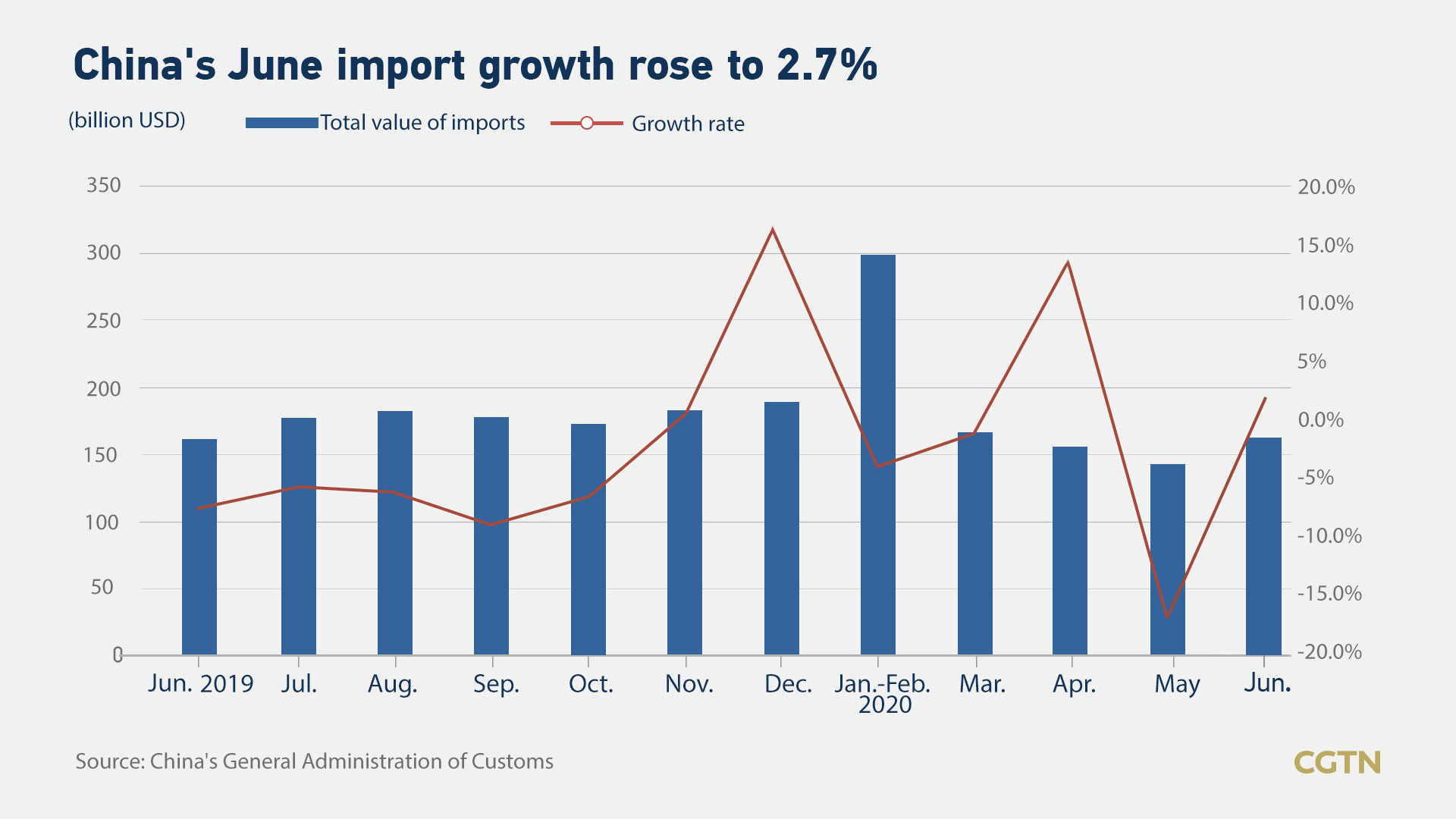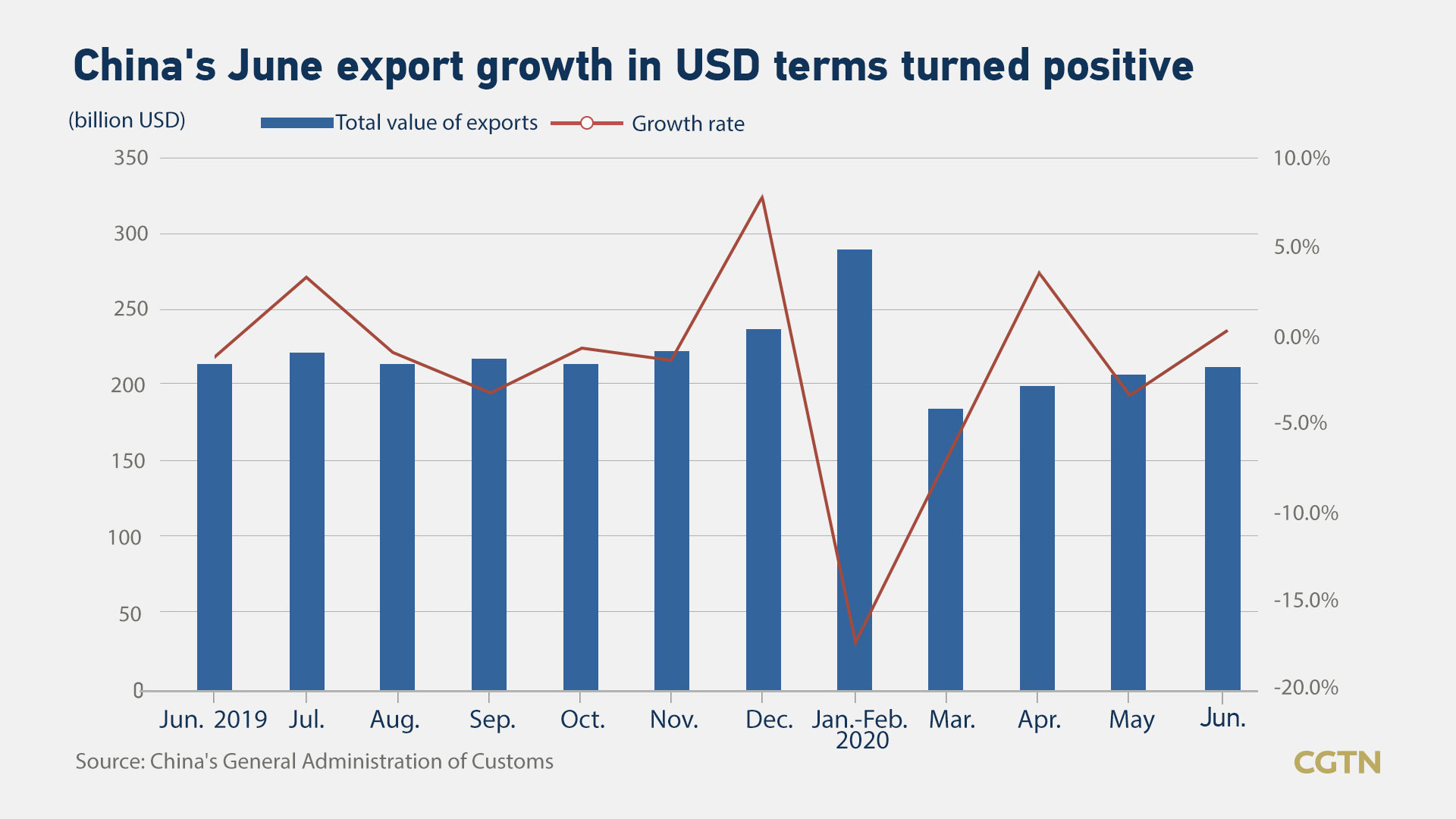01:13

China's foreign trade has the conditions and capabilities to achieve high-quality development even though COVID-19 has dealt a heavy blow to the global market, head of the General Administration of Customs (GAC) Ni Yuefeng told Xinhua in an interview.
According to World Trade Organization (WTO) estimates, the volume of global merchandise trade would slump by around 18.5 percent year on year in the second quarter of this year and by 13 percent throughout 2020.
Amid increasing uncertainties in the world market, China's foreign trade has beaten market expectations in recent months. Total foreign trade volume rose by 6.5 percent year on year in July, with exports and imports up by 10.4 percent and 1.6 percent, respectively.
Given the impressive resilience in China's exports, Nomura said it had raised its forecast for China's export growth for the second half of this year to 0.0 percent year on year from -9.0 percent.
In its latest forecast in June, the International Monetary Fund predicted that China will be one of the few economies achieving positive growth this year.
Despite the shrinking of global trade market, China's share is growing larger, which indicates the sector's rising competitiveness and increasing capacity to counter pressure, Ni said.
In the first four months, the share of China's exports in the global market gained by 0.1 percentage points. As the economy continues to recover, the share may rise further, according to Ni.

He attributed the sector's resilience to government's timely measures to curb the spread of the virus. These measures created conditions for foreign trade businesses to resume operations, along with a string of other policies to help enterprises tide over difficulties.
As part of efforts to stabilize foreign trade and investment, China has optimized services for enterprises and increased export tax rebates. Official data shows China granted export tax rebates or exemptions worth 812.8 billion yuan (about 116.6 billion U.S. dollars) in the first half of the year to relieve the financial pressure on companies.
Meanwhile, foreign trade businesses, especially private ones, have kept spending more on innovation, which also helped underpin growth in the sector, according to Ni.
"But, of course, China's resilient foreign trade should be ultimately attributed to the majority of foreign trade market players. Amid the COVID-19 pandemic, foreign trade companies, especially private ones, stopped work without halting research and development. They continued to work hard on further innovation. In other words, foreign trade companies do a good job," he said.
Strictly preventing COVID-19 cases from overseas and promoting stable growth of foreign trade are still the biggest challenges, according to the senior official.

A special task force of 3,300 customs officers in protective suits across the country could detect sometimes dozens of nucleic acid-positive cases a day, which shows the challenge our country faces, and the steady growth of foreign trade will greatly promote China's overall economy, he said.
In the latter half of the year, the GAC will further simplify clearance procedures and cut logistics costs to optimize business environment at the ports, Ni added. "I think that continuous optimization of the port business environment is the most critical part of stabilizing foreign trade."
More effort will be made to support building southern Hainan Province into a high-level free trade port and enable China's comprehensive bonded zones to play a greater role in stabilizing foreign trade and investment, he said.
Sales of export goods in the domestic market will not impact the country's foreign trade data.
"In the first half of this year, the domestic sales of processing trade accounted for merely about 12 percent of the imported goods values in processing trade. Compared with China's huge processing capacity and market scale, there is still a lot of room for improvement and foreign trade data will not be significantly lowered," he added.
(With input from Xinhua)